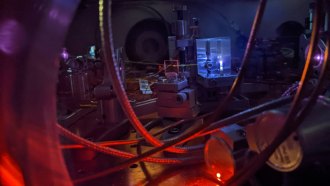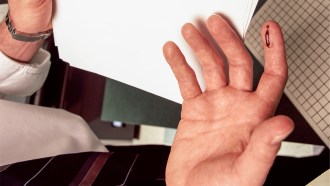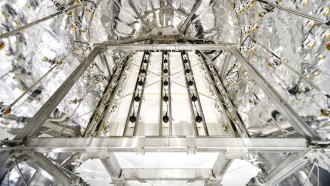
Physics
How to spot tiny black holes that might pass through the solar system
Flybys of primordial black holes may occur once a decade. Tweaks to the orbits of planets and GPS satellites could give away their presence.
Every print subscription comes with full digital access

Flybys of primordial black holes may occur once a decade. Tweaks to the orbits of planets and GPS satellites could give away their presence.

Nuclear clocks could rival atomic clocks and allow for new tests of fundamental physics. A new experiment demonstrates all the ingredients needed.

Mayonnaise’s texture is perfect for mimicking what a fusion fuel capsule goes through after it’s blasted with lasers.

The LZ dark matter experiment has ruled out weakly interacting massive particles, or WIMPs, with a wide range of properties.

Using a laser and an electron beam, the microscope can snap images of moving electrons every 625 quintillionths of a second.

A corrugated exterior wall reflects heat to space and absorbs less heat from the ground, keeping it several degrees cooler than a flat wall.

Dot matrix printer paper is the most treacherous, physicists report. Magazine paper comes in second.

The hint of fog marks a new way to observe neutrinos, but points to the beginning of the end for this type of dark matter detection.

Scientists made the known element 116 with a beam of titanium atoms, a technique that could be used to make the undiscovered element 120.

Brief blasts of light might make some materials into fleeting superconductors. Magnetic measurements strengthen the case for this controversial claim.
Subscribers, enter your e-mail address for full access to the Science News archives and digital editions.
Not a subscriber?
Become one now.